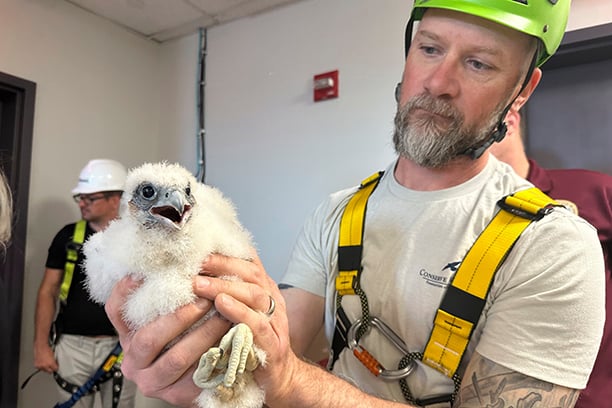Illinois Mixed Bag: New study suggests substantial species barrier preventing transmission of CWD to people – Outdoor News

Springfield — A new study of prion diseases, using a human cerebral organoid model, suggests there is a substantial species barrier preventing transmission of chronic wasting disease (CWD) from cervids – deer, elk, and moose – to people.
The findings, from National Institutes of Health scientists and published in Emerging Infectious Diseases, are consistent with decades of similar research in animal models at the NIH’s National Institute of Allergy and Infectious Diseases. Prion diseases are degenerative diseases found in some mammals. These diseases primarily involve deterioration of the brain but also can affect the eyes and other organs. Disease and death occur when abnormal proteins fold, clump together, recruit other prion proteins to do the same, and eventually destroy the central nervous system.
In the new CWD study, the bulk of which was done in 2022 and 2023, the research team validated the study model by successfully infecting human cerebral organoids with human CJD prions (positive control). Then, using the same laboratory conditions, they directly exposed healthy human cerebral organoids for seven days with high concentrations of CWD prions from white-tailed deer, mule deer, elk, and normal brain matter (negative control).
The researchers then observed the organoids for up to six months, and none became infected with CWD.
MORE COVERAGE FROM OUTDOOR NEWS:
Great Father’s Day gift ideas for outdoor enthusiasts
Outdoor Hall of Fame Nominations Sought
Springfield — The Illinois Conservation Foundation is accepting nominations for the 2024 Illinois Outdoor Hall of Fame class.
The honor recognizes individuals who have records of exemplary service in and commitments to improving conservation efforts and outdoor recreation opportunities in Illinois.
Some inductees touched the lives of thousands by promoting fishing, hunting, conservation and safety education. Others spearheaded efforts to preserve or enhance fish and wildlife habitat and protect and restore Illinois’ lakes and rivers.
Selected nominees will be inducted into the Illinois Outdoor Hall of Fame next spring at the annual Illinois Conservation Foundation Outdoor Hall of Fame Gala.
Nominations must be submitted on the official Hall of Fame nomination form by July 15 to be considered. For more information, contact the Illinois Conservation Foundation at [email protected] or 217-785-2003.
Mapping of Prescribed Burns Encouraged
Springfield — DNR and the Illinois Prescribed Fire Council are joining forces to encourage all prescribed fire practitioners to “map your burn” and contribute to the annual Illinois Prescribed Fires Accomplished Map.
Prescribed fire not only enhances habitat for flora and fauna, but it also plays an important role in reducing fuel loads and mitigating the risk of brushfires and wildfires. Furthermore, it serves as a cost-effective tool for combating invasive species and safeguarding the integrity of Illinois’ natural areas.
Mapping a prescribed burn is a straightforward process.
Participants simply need to email [email protected] with a shapefile or a KMZ file, including the date of the burn or the burning season. Multiple burn units can be submitted as a single file or as individual files for each burn.
“The map showcases the fire community across the state and sends the message that we are all working together,” IDNR Assistant Director Todd Strole said. “Done correctly in optimal conditions, prescribed fire is effective and safe tool for fostering plant growth, managing invasive species and reducing wildfires.”
Olney Angler Wins Shelbyville Tournament
Findlay, Ill. — Jeffrey Lee, of Olney, caught a five-bass limit weighing 13 pounds, 4 ounces, May 18 to win the MLF Phoenix Bass Fishing League tournament on Lake Shelbyville.
“I figured out that there was only one area of the lake really – the lower end – that had any fish for me,” Lee said. “Other guys did better up on the mid- and upper lake, but I stayed on the lower end and basically flipped shallow wood all day.”
Lee targeted stumps, laydowns and other wood cover with a Reaction Innovations Sweet Beaver in the dirty Sanchez color. Some of the wood was on the bank, but Lee also fished deeper cover that wasn’t visible by eye. The day started fast for Lee. He put three keepers in the box by 7 a.m., including a 4-11 kicker, but then the action slowed. He broke off a 4-pounder that might have put the tournament away sooner.
Lake Michigan Chinook Project a Success
Chicago — The first year of a cooperative project between the Indiana DNR and the Lake County Fish and Game Protective Association to improve Chinook salmon fishing in Lake Michigan successfully concluded earlier this month. The project used a floating enclosure built by LCF&G to acclimate Chinook salmon stocked by the DNR at East Chicago Marina. The fish were stocked into the enclosure on April 22 and successfully released by LCF&G on May 4.
“We’re very pleased with the first year of this effort,” said Indiana DNR Lake Michigan fisheries research biologist Ben Dickinson.
Juvenile Chinook salmon, called smolts, spend several days acclimating to their new environment after being stocked before swimming to Lake Michigan. They feed for several years in the lake and then return to their stocking site as mature adults to spawn. The goals of the project are to protect the smolts from being eaten by birds and other fish in the first several days after stocking and help them imprint on the harbor so they can return as large, adult fish anglers can catch.






